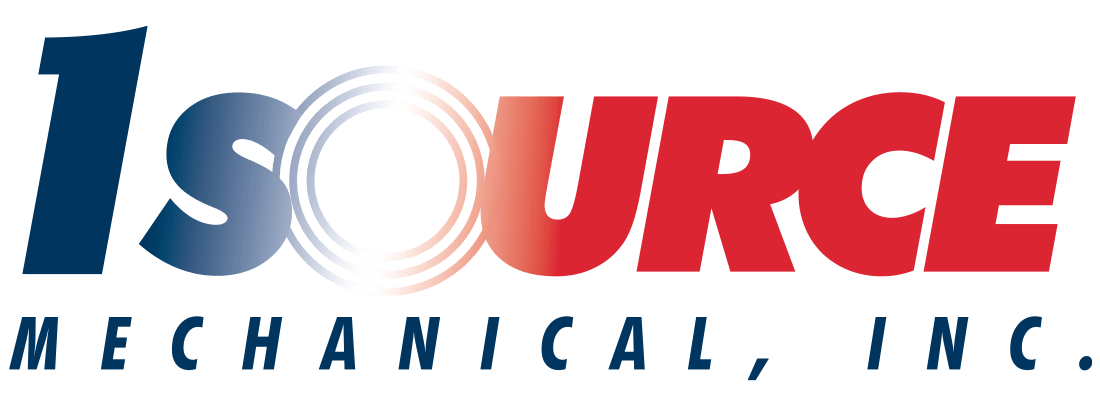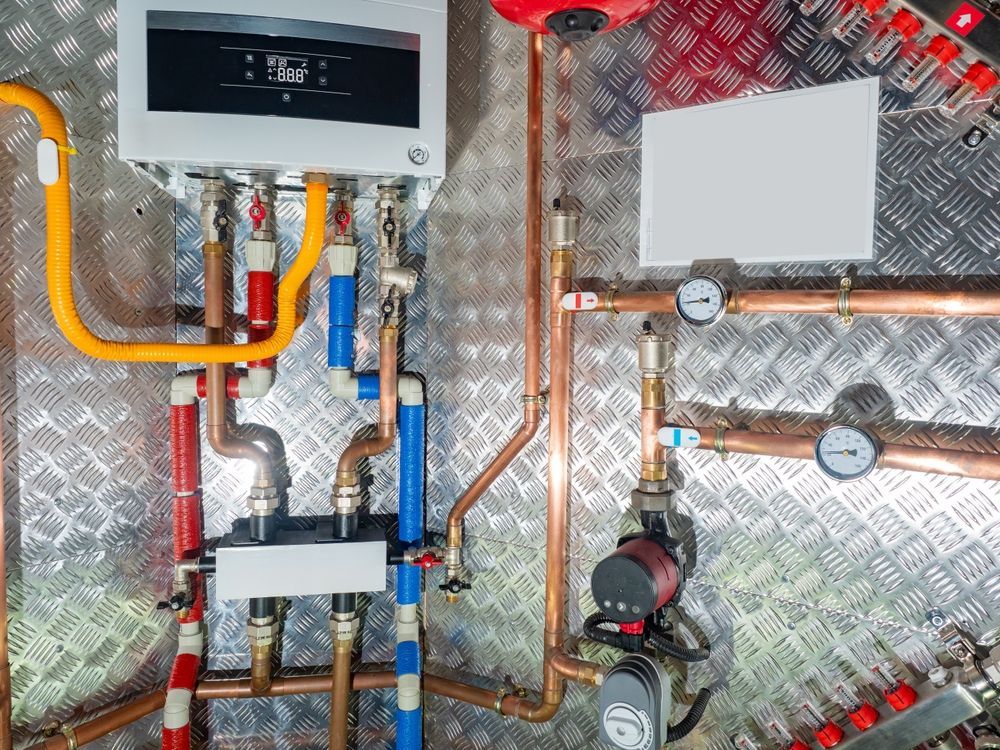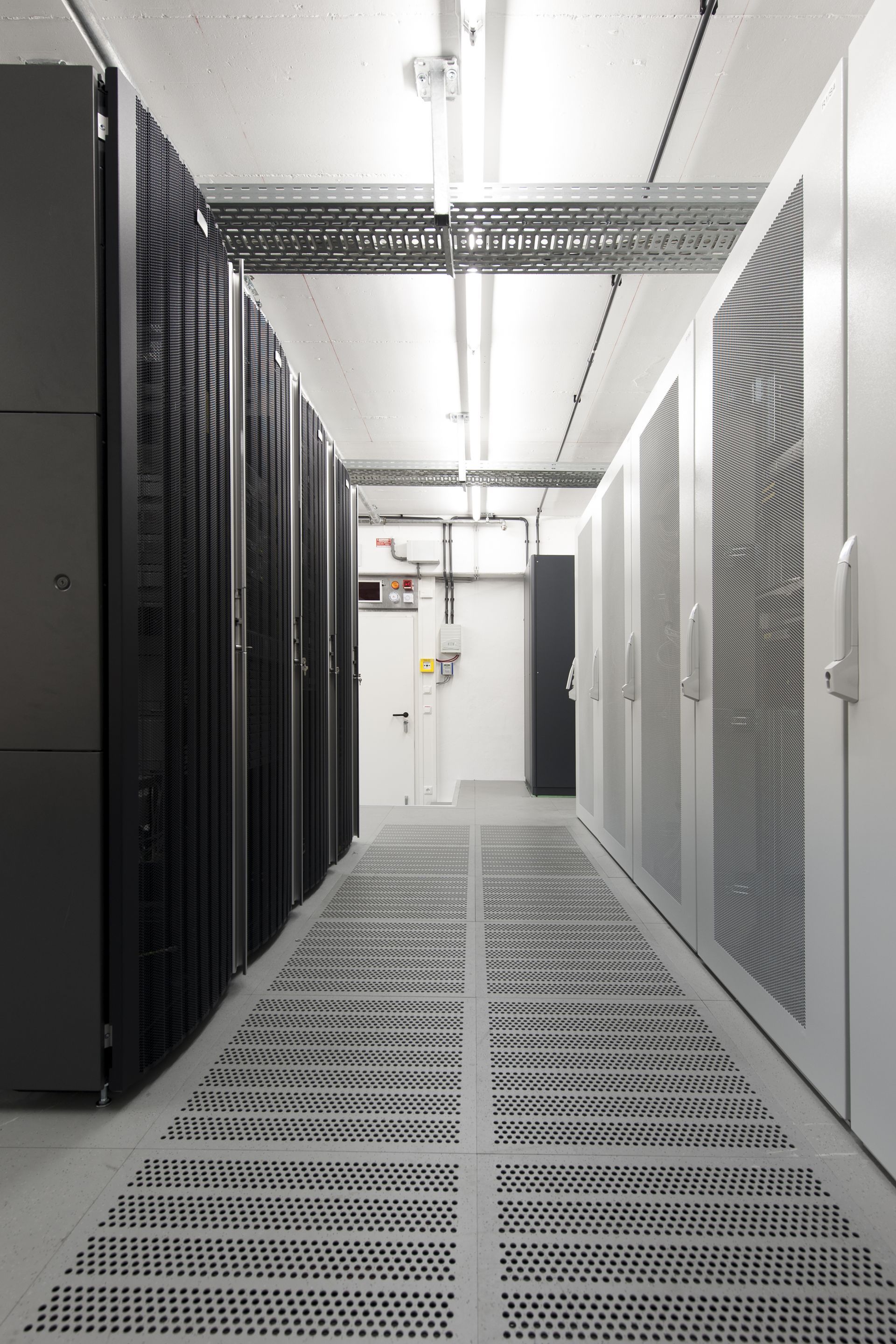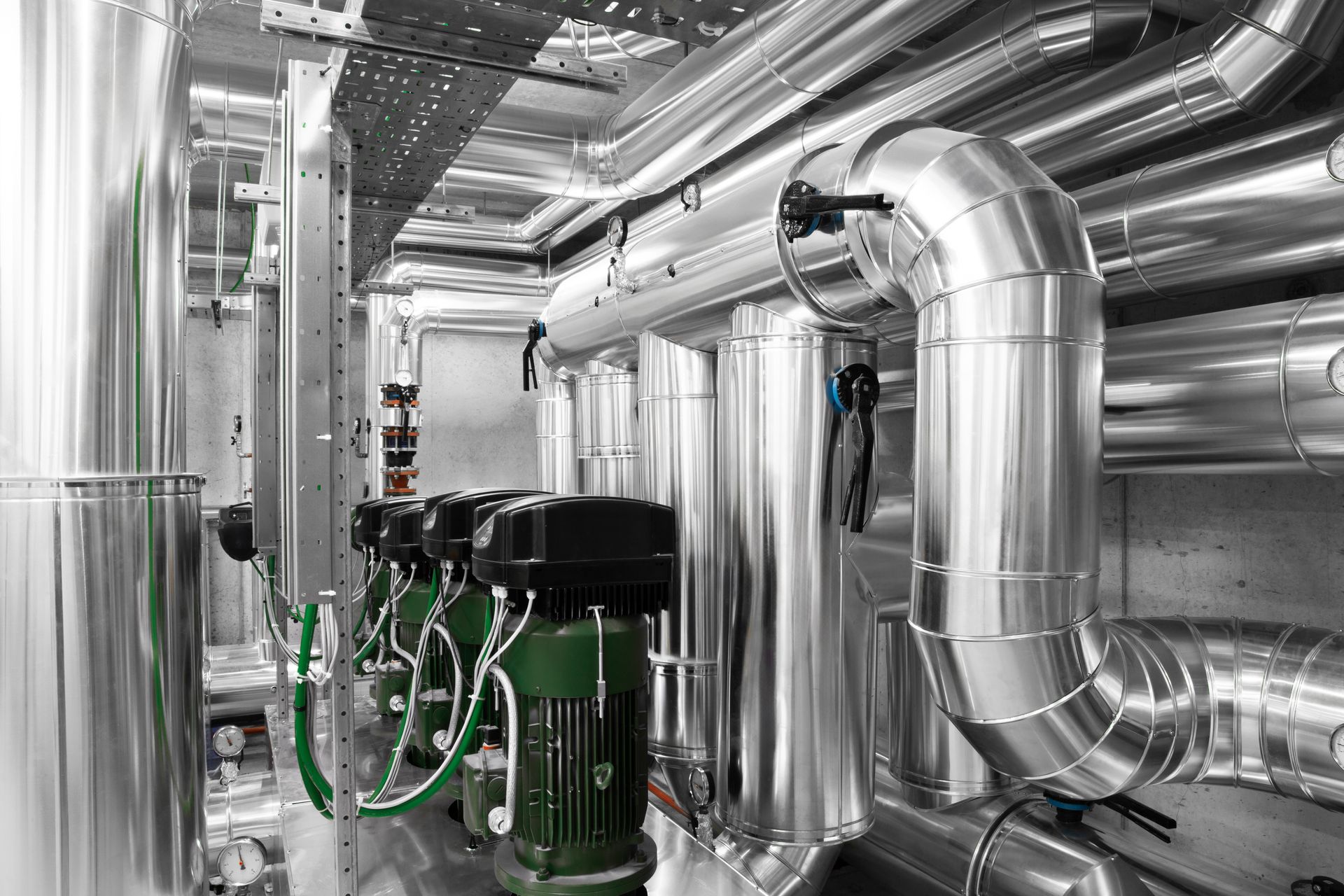Comparing Different Types of HVAC Chillers
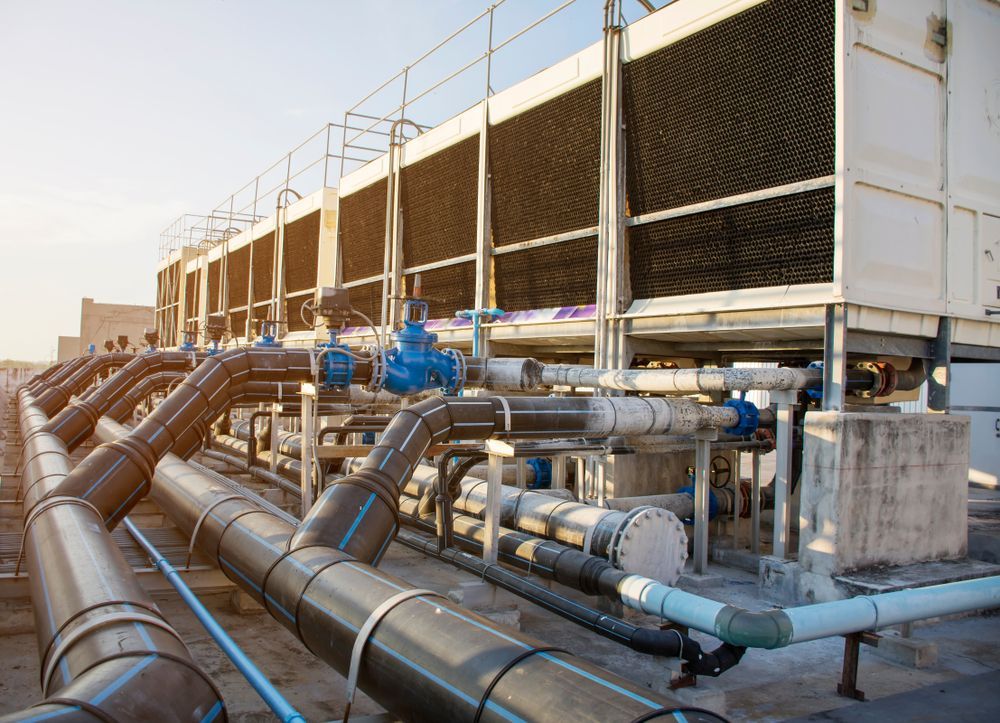
Phew... it's hot outside! If you've ever wished there was a simple way to cool down the interior of your commercial space, chillers may offer a solution.
Chillers are HVAC components that maximize the cooling capacity of your commercial HVAC system. They work by cooling down water, then distributing it around the building. This lowers the ambient air temperature, creating a comfortable environment for employees and customers.
Read on to learn more about chiller technology and the different types of chillers, and see how 1 Source Mechanical can help you determine if a chiller is right to help keep your commercial property cool in the heat.
What Are Chillers
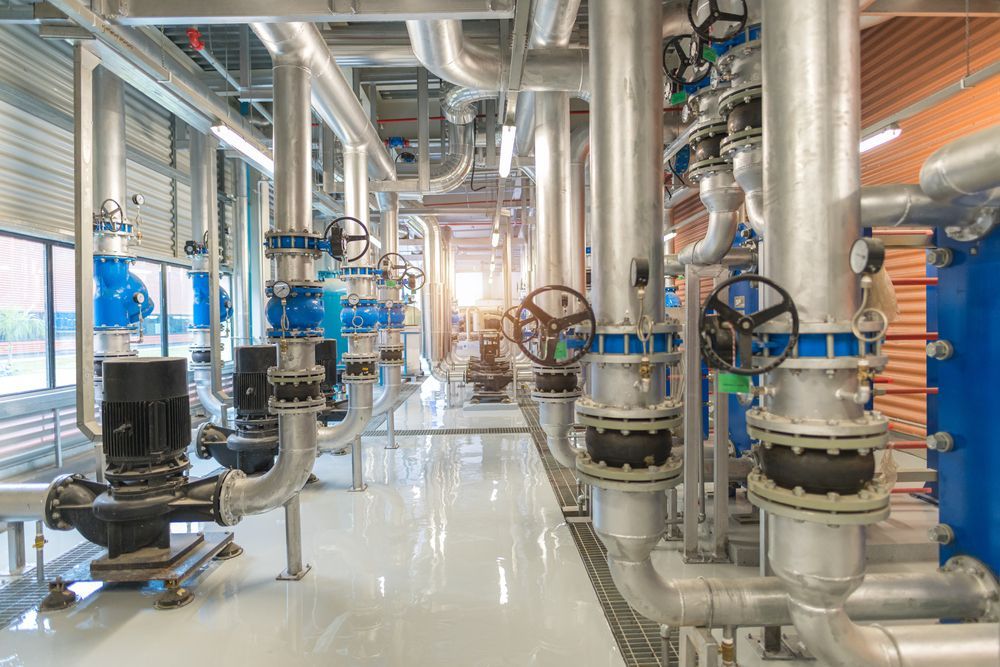
Let's start with the basics: What, exactly, are chillers?
A chiller is a mechanical device that works with your commercial HVAC system to cool indoor air. In broad terms, the chiller transfers internal heat to an external location. Heat comes from a few sources, such as solar energy beating down on the outside of the building. The building's occupants — and the equipment they use — could also raise the air temperature.
An HVAC system cools the air, keeping it at a comfortable temperature. In large commercial spaces, a chiller helps maximize the air conditioning process.
A chiller works by generating cold water (or other liquids, such as a glycol solution) and moving it around the building. This, in turn, cools the air.
Usually, chillers are located on the roof or in a basement. The machine moves excess heat between an evaporator and a condenser. The evaporator chills the water or refrigerant solution. A pump sends the cooled water around the building, gathering heat as it goes.
That excess heat is then released to the outdoors. The heat transfer may be facilitated by cooling towers, which simply release the heat into the outdoor air, or by a fan that blows across coolant coils.
What are the Main Components of a Chiller?
Chillers usually have four main components:
- A compressor
- A condenser
- Thermal expansion valve or metering device
- An evaporator
These components work together to change the water or refrigerant solution from a liquid to a gas. At that point, heat is released. Then the gas is returned to a liquid state.
Here's how these chiller components work together to lower air temperature. First, the compressor pumps heated liquid to the condenser. Here, the liquid is pumped to a cooling area. The condenser meters and pressurizes the liquid, so it transforms into gas as it moves into the evaporator.
Here, the gas vaporizes, all the while absorbing heat from the air around the chiller. This lowers the temperature, and the gas turns back into liquid.
Now the heated liquid is pumped back into the condenser. It's pressurized once again, the heat transfers, and the cycle starts once again.
Different Types of HVAC Chillers
There are two general categories of chillers: vapor compression and vapor absorption. The most common type, vapor compression, uses electricity to power a mechanical compressor that drives refrigerant liquid around the system.
Within the vapor compression category are two types of chillers: water-cooled and air-cooled. In contrast, vapor absorption chillers utilize a heat source to drive the refrigerant liquid through the system. Along the way, the liquid cycles through different temperatures and pressures. Within this category are also two types of chillers: absorption and centrifugal.
Air-Cooled
An air-cooled chiller works a bit like a radiator that cools an automobile engine. It works by using a fan to blow air across tubes filled with refrigerant liquid. This carries the heat away.
Often, these types of chillers are used in small or medium-sized commercial properties. Air-cooled chiller systems work best when the temperature remains below 95 degrees F.
They're usually simpler to install and usually cost less than other types of chillers. However, because they usually sit on the roof, air-cooled chillers may not last as long as other options. They're exposed to the elements and may experience damage or blockage from rain, snow, and wind conditions.
Water-Cooled
Water-cooled types of chillers work in much the same way as air-cooled chillers. However, instead of blowing air across tubes of refrigerant, water-cooled chillers transfer heat in a two-step process.
First, the heat is transferred from vapor into water in the condenser. The heated water is pumped to a cooling tower, where the heat is then released into the air. Sometimes a fan is used to help move the heat along.
Water-cooled chillers are often used in commercial spaces where there's an adequate water supply. They're not as sensitive to ambient air temperature as air-cooled types, so they tend to be a more efficient choice in medium- to large-sized commercial buildings.
Water-cooled chillers often reside in a basement. Because they're protected from the elements, water-cooled chillers tend to have a longer lifespan. However, they're more complex and usually have higher installation and maintenance costs.
Absorption
Absorption chillers pump liquid or steam through lines. As the refrigerant boils into vapor, it passes into the condenser. Then it's reliquified through a chemical process and pumped back into an absorber.
There, the liquid is absorbed, then transformed into vapor again. The cycle removes heat from the air. This type of chiller is most effective in large spaces.
Centrifugal
A centrifugal chiller uses energy and centrifugal force to compress the refrigerant liquid. The liquid is pumped in using spinning blades. As the liquid compresses under pressure, the heat is expelled.
While centrifugal chillers are more efficient, they do tend to cost more upfront. They're best for use in large commercial or industrial spaces.
If you're not sure which types of chillers would work best for your commercial property, 1 Source Mechanical is here to help. Our professional team has the knowledge and experience you need to evaluate the installation, maintenance, and repair needs of your commercial HVAC system. Contact 1 Source Mechanical today to learn how we can help.
